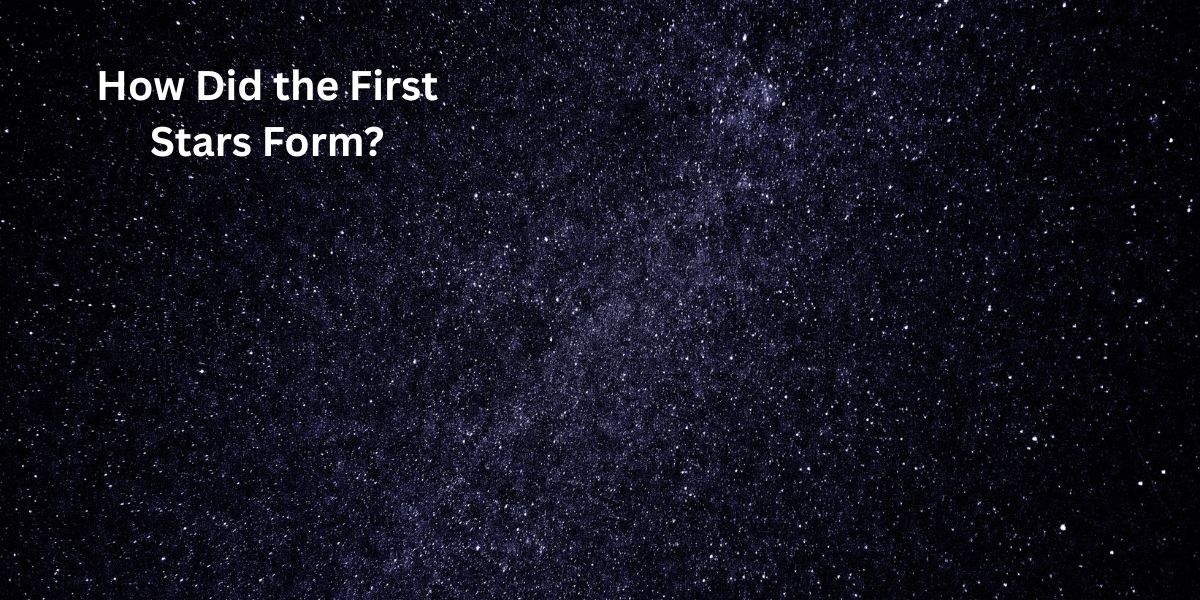Have you ever looked up at the night sky and wondered how the first stars appeared? Long before the Sun and Earth existed, the universe was a dark, empty place. There were no stars, no planets—just tiny particles floating in space. But then, something amazing happened! The first stars were born, lighting up the universe for the very first time.
These first stars were very different from the ones we see today. They were huge, bright, and lived short but powerful lives. Without them, the universe would still be a dark, lonely place. So, how did these first stars form? What made them appear in the empty darkness of space? Let’s find out!
What Was the Universe Like Before the First Stars?
Before the first stars, the universe was very young—only a few hundred million years old. It was filled with gas, mostly hydrogen and helium, floating in darkness. There was no light, no heat, just a quiet, empty space.
Over time, gravity started pulling these gas particles together. Imagine tiny dust specks sticking together to form a snowball—that’s how the first stars began! The gas clumped into dense clouds, and when enough gas gathered, it became hot and heavy. This was the beginning of the very first stars.
Fun Fact: The first stars are called “Population III stars” by scientists. They were made only of hydrogen and helium because no other elements existed yet!
How Did Gravity Help Form the First Stars?
Gravity is the force that pulls things together. In space, gravity pulled the gas clouds closer and closer until they became extremely dense. As more gas gathered, the pressure and heat inside the cloud increased.
Think of it like squeezing a balloon—the more you press, the hotter it gets inside. When the gas cloud became hot enough (millions of degrees!), a nuclear reaction started. This reaction was fusion, where hydrogen atoms smashed together to form helium, releasing huge amounts of light and heat. And just like that—the first star was born!
Key Points:
- Gravity pulled gas together.
- The gas became super hot and dense.
- Hydrogen fused into helium, creating light—the birth of a star!
Why Were the First Stars So Big?
The first stars were giants—much bigger than our Sun! Some were 100 times heavier than the Sun. Why? Because there was so much pure hydrogen and helium gas available, and nothing stopped them from growing.
Today, stars form in clouds that contain dust and other elements, which slow down their growth. But back then, the universe was clean and simple, allowing stars to become massive.
These giant stars burned very brightly but lived only a few million years (a short time for a star!). When they died, they exploded in huge blasts called supernovas, spreading new elements into space.
What Happened When the First Stars Died?
The first stars didn’t last long, but their deaths were just as important as their births! When they ran out of fuel, they exploded in supernovas. These explosions scattered new elements like carbon, oxygen, and iron into space.
This was a big deal because these elements later helped form new stars, planets, and even us! Without the first stars, Earth and life as we know it wouldn’t exist.
Fun Fact: Every atom in your body was once inside a star! You are literally made of stardust.
Can We See the First Stars Today?
Sadly, no. The first stars died billions of years ago, and their light is too faint to see now. But scientists use powerful telescopes like the James Webb Space Telescope (JWST) to look for clues. They study the oldest galaxies to learn more about these ancient stars.
One day, we might find direct proof of the very first star. Until then, we keep exploring!
The First Stars Lit Up the Universe!
The first stars were the universe’s first light. They formed from simple gas, grew massive, and then exploded, creating the ingredients for everything we see today. Without them, there would be no planets, no Sun, and no life on Earth.
Next time you look at the stars, remember—they all started with those first, giant stars billions of years ago. Isn’t that amazing?
What do you think the universe was like before the first stars? Share your thoughts!
📌 Frequently Asked Questions
How long ago did the first stars form?
The first stars formed about 13.5 billion years ago, just a few hundred million years after the Big Bang.
What were the first stars made of?
They were made only of hydrogen and helium—the simplest elements in the early universe.
Why were the first stars so bright?
They were much bigger than today’s stars, so they burned hotter and brighter.
Did the first stars have planets?
No, because planets need heavier elements like carbon and oxygen, which didn’t exist until after the first stars died.
How do scientists study the first stars?
They use telescopes like the James Webb Space Telescope to observe ancient galaxies and leftover light from the early universe.
What is a Population III star?
It’s the name scientists give to the first generation of stars, made only of hydrogen and helium.
How did the first stars die?
Most died in giant explosions called supernovas, spreading new elements into space.
Could life exist without the first stars?
No! The first stars created the elements needed for planets and life.
Are there any first stars left?
No, they all died long ago, but their remains helped form new stars and planets.
Will new stars ever form like the first stars?
No, because today’s universe has dust and other elements that change how stars form. The first stars were unique!
